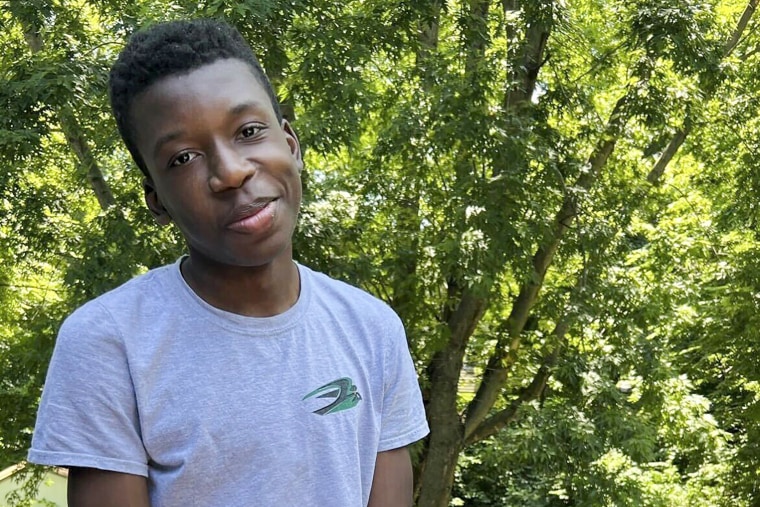Social Justice
Broken Silence : Behind Prison Walls
A last-minute plea deal in March 2015, spared former correctional officers Sean Warner, Keith Swack, and Matthew Rademacher any jail time in exchange for quitting their jobs.

“Let me be clear: This has never been about jail for these officers, even though they came dangerously close to that idea.” –Wyoming County District Attorney, Donald O’Geen

From left : Sgt Sean Warner Officer Keith Swack and Officer Matthew Rademacher Photo New York State Police
A last-minute plea deal in March 2015, spared former correctional officers Sean Warner, Keith Swack, and Matthew Rademacher any jail time in exchange for quitting their jobs. The three were set to go on trial for charges of gang assault, filing false reports and evidence tampering. Under the plea agreement, they can never again work in a New York State correctional facility.
“This prosecution has always been about holding these officers accountable for their abuse of power and to, once and for all, get them out of the corrections profession,” Mr. O’Geen added.
One month before the 40th anniversary of the gory Attica prison riot, on the evening of Aug. 9, 2011, an officer was passing the mail out to the population in C Block, one of the many large cellblocks hidden behind the enormous, three-story tall, impenetrable wall.
According to what a New York State Police inquiry found, there was a lot of noise from people talking as they mingled on the gallery outside their cells. Aggravated, the officer shouted down the concrete hallway that’s lined on both sides with metal sliding doors: “Shut the f**k up!” Usually, that’s enough to quiet down C Block on the 3 to 11 p.m. shift, where the officers are known for the stringent, violent, application of the rules. But that night, someone, somewhere on the gallery, bellowed back: “You shut the f**k up! Suck my d**k!” The heckler then went on to taunt the officer with an obscene gesture.
“Everyone lock the f**k in, NOW!” came the order from the officer. Everyone complied. Half an hour later, a sergeant, with three officers in tow, stormed down the corridor. They arrived at the cell of George Williams, a 29-year-old African American from New Jersey who was serving a sentence of two to four years, for two non-violent jewelry store robberies in Manhattan.
Williams had just four months left before his release date. He planned to go home to New Brunswick and work as a licensed barber. Mr. Williams remembers that on that night, he had been in his cell watching television, he had his headphones plugged in and over his ears, so he didn’t even hear the shouting on the cellblock. His cell door slid open and the CO’s ordered him to strip for a search. They paraded him down the gallery to a dark program room, that was used for meetings and classes, for what they told him would be a urine test.
The three officers loomed over him. Mr. Williams is five-foot-eight, a solid 170 pounds. The smallest was Sgt. Sean Warner, 37, at 5-foot-11, 240 pounds. Officer Keith Swack, 37, a burly 6-foot-3 and some 300 pounds. A third officer was standing behind the cell door. Mr. Williams thought it was Officer Matthew Rademacher, 29, who had followed his father into the job six years earlier. Officer Rademacher was six feet tall and weighed 260 pounds. The three linebacker sized white men all wore goatees.
Mr. Williams was thinking why a sergeant would be doing low man on the totem pole work like a drug test when, he said, a solid fist pounded into his rib cage. He collapsed to the floor and more blows came down from all angles. Williams curled up into the fetal position to protect himself from the pummeling of batons, fists and kicks. He shrieked in pain. One of the officers jumped on his ankle. Through barely open eyes, he saw a Chippewa boot about to kick his head, as though punting a football. I’m going to die here, he thought.
People in cells across from the program room watched the attack, among them a man named Charles Bisesi, 67, who saw Mr. Williams pitched face-first onto the floor. He saw guards kick Mr. Williams in the head and face, and strike him with their heavy wooden batons. Mr. Bisesi estimated that Mr. Williams had been kicked up to 50 times, and struck with a dozen more blows from nightsticks, thwacks delivered with such force that Mr. Bisesi could hear the thud as wood hit flesh. He also heard Mr. Williams begging for his life, cries loud enough that people in their cells two floors below heard them as well.
One of the guards loudly rapped his baton on the floor a few minutes into the beating. A signal, and more guards stormed upstairs. Witness accounts aren’t precise on the number. Some say as many as a dozen officers jumped into the assault. Others recalled less. But all very clearly remembered that when they were finished, Mr. Williams could not walk.
An examination of this case and dozens of others offers a vivid lesson in the intractable culture of prison brutality, especially given the notoriety of Attica, which entered the cultural lexicon as a synonym for prison havoc after 43 men died there in 1971 as the state suppressed an uprising by inmates. This account is based on investigative reports and court filings, as well as interviews with people on both sides of the bars at Attica, state officials and prison reform advocates.
After the attack subsided, a witness in his cell athwart from the dayroom, Maurice Mayfield, watched as an officer stepped on a plastic safety razor and pried out the blade. “We got the weapon,” the officer yelled and Mr. Mayfield shook his head inside his cell.
“Walk down or we’ll push you down,” an officer said.
Mr. Williams was handcuffed and dragged to the top of a flight of stairs. He could not walk. He could barely stand. He opened his mouth to speak and was pushed. He crashed down the stairs, landing onto his shoulder at the bottom. His assailants picked him up again, this time one of them grabbed his head and smashed his face into the wall.
When someone is accused of violating the written rules that govern all of New York State’s prisons, procedure calls for a disciplinary hearing. At the conclusion of this hearing, it will be determined how long the rule breaker will be placed in solitary confinement in the Special Housing Unit. Depending on the nature of the offense, time in the “Box”, the known nickname for this place of torture, lasts anywhere between days, weeks, months, and even years. Albert Woodfox, spent more than four decades in solitary confinement in a Louisiana prison.
When the officers escorting Mr. Williams that night arrived at the Box, the officer in charge refused to accept him, he told the officers to take him to the infirmary. “We can’t take him in here looking like that,” Mr. Williams heard the officer say.
Katherine Tara, a nurse who had been working at Attica for just 10 months, saw cuts over Mr. Williams’s eyes and blood on his mouth and clothing. His face was swollen. His vision was blurry and he told her that he thought his ribs and leg were broken. The officers were nearby, so he didn’t explain how he received his injuries. Ms. Tara would later tell investigators that she had treated other inmates in what are called “use of force” cases. This one was excessive, it was bad. She called the prison’s medical doctor and he concurred: Mr. Williams needed to go to an outside hospital.
While Mr. Williams was waiting in the infirmary, a group of officers that were involved in the gang assault arrived, as well as Officers Rademacher and Swack. Williams heard them bragging and boasting that there would be no consequences for the beating: “The sh*t that happened upstairs isn’t going to be nothing.”

Aerial view of Attica Correctional Facility in Attica, New York. The mammoth 30- foot- tall, concrete wall stretches for more than a mile around the outside perimeter.
Photo: Shutterstock
He first to a hospital in Warsaw, in Wyoming County, where Attica is located. His injuries were too severe for the doctors there to treat, so, he was driven to Erie County Medical Center in Buffalo, 50 miles away.
The smallest bumps on the road sent jolts of excruciating pain through every nerve in his body, but Mr. Williams was very grateful he could feel that pain, it meant he was still alive. Then reality struck and sent a chill down his spine on that blistering night in western New York. He knew that if he went back to Attica, they would kill him. He asked the EMT if he could use his cellphone to call his family, but was denied.
In Buffalo, they diagnosed his injuries: a broken shoulder, several cracked ribs and two broken legs, one of which required surgery. Doctors realigned it, using a plate and six screws. Mr. Williams also had a severe fracture of the orbit surrounding his left eye, a massive amount of blood lodged in his left maxillary sinus, and numerous cuts and bruises.
“He shouldn’t have had a weapon,” is what one of the officers told a doctor inquiring into how Mr. Williams came about his injuries. That was the only response given.
The concocted single sentence, or lie, was also written on all official reports at Attica. Officers detailed Mr. Williams’s fabricated infractions, which consisted of the razor blade and ice pick-like shaft they said they found on him. Raymond Sanabria, a porter on C Block, was told to “hurry up and clean up the blood.” Officers warned him to keep quiet, Mr. Sanabria later told investigators.
Officer Rademacher ordered another witness to clean up more blood from inside the hall captain’s office, where the officers had regrouped after the melee. Peter Thousand, also a porter, was told to bring a bag of blood-soiled shirts outside to a courtyard where officers kept a barbecue pit. Investigators later confirmed his story and concluded that it was an effort to destroy evidence.
Investigators also uncovered something else: If the guards were looking to punish the prisoner who had shouted out the curses earlier that night, they got the wrong man.
Had the nurse on duty the night George Williams was beaten played down his injuries, he believes the episode would have been logged as one more inmate assault on staff members. “She was a blessing,” he said. “If she hadn’t of said I needed a surgeon, I would have been dead.”
Instead, Mr. Williams’s case took a very different route. The corrections department’s inspector general began an inquiry, and the State Police were soon called in as well. Over the following weeks, investigators asked guards, inmates and medical personnel what they had seen.
Many did not want to talk about it. Under their union contract, corrections officers are obligated to answer questions only from their employers and have the right to refuse to talk to outside police agencies. State Police investigators attempted to interview 15 guards; 11 declined to cooperate.
Witnesses on C Block were reluctant to talk for their own reasons. More than two dozen said they had seen Mr. Williams marched past them and had later heard his screams. But those with the clearest view of what happened inside the dayroom balked at telling what they saw, saying they feared retaliation.
To get their depositions, the State Police had the corrections department relocate five inmates to other prisons.

September 13, 1971. The conclusion of a bloody and violent riot that left 43 dead. Then Gov. Rockefeller ordered the New York State Police to storm Attica with guns blazing. When the dust settled, 29 prisoners and 10 officers died in a hail of bullets from police gunfire.
Photo: Library of Congress
A month after the beating, just as corrections officers and residents of the village of Attica were marking the anniversary of the 1971 riot, the corrections department issued formal “Notices of Discipline” to five officers. The notices sought their dismissal for using excessive force on Mr. Williams, submitting false documentation and lying to the inspector general.
The move prompted an immediate rebellion among Attica’s corrections officers, who began a by-the-book work slowdown. Such job actions are not uncommon, with the only victims being the inmates whose meals, programs and visitors are all delayed.
Still, the investigations continued. On Dec. 13, 2011, a state grand jury in Warsaw handed up criminal indictments against four Attica guards: Sergeant Warner, along with Officers Rademacher, Swack and Erik Hibsch, who was accused of joining in the beating in the dayroom. The four were arraigned in State Supreme Court in Wyoming County on charges of first-degree gang assault, a law commonly used to help tame gangs like the Crips, Bloods and Latin Kings that thrive inside New York’s prisons. The charges carried a minimum sentence of eight and one-third years in prison and a maximum of 25 years. Additional felony counts accused the officers of filing false reports and tampering with evidence. The charges against Officer Hibsch were later dropped.
It was the first time, state officials said, that criminal charges had been brought against corrections officers for a nonsexual assault on an inmate.
Union leaders denounced the charges. “They did not go after this guy,” the union’s western regional representative, Al Mothershed, told a Rochester television station. “They did not beat him up intentionally. They used the amount of force that was necessary to gain control of this inmate and keep him from attaining a weapon.”
State corrections officials acknowledged in a statement that the department had referred the case to prosecutors, but stopped short of condemning the attack. The indictments, it said, were “troubling.”
The choice to refer the case to law enforcement was made by Mr. Fischer, the corrections commissioner at the time. “This was something too obvious to ignore,” he said. The “beat-down,” he added, was the worst such incident on his watch. “It was clear to me that a number of officers had acted together. It wasn’t something that spontaneously occurred, like in the middle of the hall.”
Mr. Williams was sitting in another prison dayroom when news of the arrests came on television. “I almost passed out,” he recalled.
Inmates at Attica were stunned by the indictments as well. To them, the remarkable thing about the beating Mr. Williams endured that August night was not the cynical way in which it seemed to have been planned, or even the horrific extent of his injuries. What was truly notable was that the story got out, and that officers had been arrested and charged.
Those now beyond the reach of the batons described life at Attica in detail. Antonio Yarbough, 39, spent 20 years in the prison after being convicted of a multiple murder of which he was exonerated in 2014. Unlike Mr. Williams, Mr. Yarbough could go head-to-head with the biggest of Attica’s guards: He is 6-foot-3 and 250 pounds. But he said that fear of those in charge was a constant. “You’re scared to go to the yard, scared to go to chow. You just stay in your house,” he said, using prison slang for a cell.
That fear was palpable to Soffiyah Elijah when she visited Attica a few months before the beating of Mr. Williams as the Correctional Association’s newly appointed executive director. The organization holds a unique right under state law that allows it to inspect state prisons. “What struck me when I walked the tiers of Attica was that every person, bar none, talked about how the guards were brutalizing them,” Ms. Elijah said. “There are atrocities as well at Clinton and Auburn, but the problem is systemic at Attica.” In 2012, the association began calling for Attica to be shut down. “I believe it’s beyond repair,” Ms. Elijah said.
Mr. Fischer, the former state corrections chief, reluctantly agreed with the conclusion that Attica should be closed.
“Of all the maximum security prisons, I would probably argue, given the history of it, we’d probably be better off if we did,” he said.
George Williams knew about Attica’s history but had not concerned himself with it. “I wasn’t there for that,” as he talked, he dabbed steadily at his nose, a residual effect of the sinus damage from the beating three years ago. Other mementos included a left eye more sunken than the right, and a leg that, he said, “is always bothering me.” Less visible are the headaches and nightmares. “I still can’t sleep,” he said.
After he was released from the hospital, Mr. Williams was sent to a different maximum security prison, near Buffalo. He finished his sentence in January 2012. Doctors have diagnosed him with post-traumatic stress disorder after he described flashbacks and waking from nightmares in a sweat.
He still does not know why he was singled out at Attica. “I was doing my time,” he said. “I was ready to go.” His crimes, he said, were a product of being “young and dumb.” In the hospital, he worried that if he died, his family would assume it was “because of something I did.”

“We are not beasts, and we do not intend to be beaten and driven as such… What has happened here is but the sound before the fury of those who are oppressed.” –Attica riot. Photo: Library of Congress
Inmates still incarcerated at Attica said there were high hopes that the case would spur changes in how the prison was policed. Those hopes have since ebbed. The only way to get attention, they said, is something dramatic. “We feel Albany doesn’t give a damn,” one inmate said, voicing despair rather than menace. “No one on the outside is going to change anything. Guys say: ‘We need another riot. It’s the only way to stop it.’ ”
Social Justice
Family of Black teen shot in head after ringing doorbell of wrong home sues gunman and HOA
The family of the Ralph Yarl, the Black teenager who was shot in the head after ringing the doorbell of the wrong home in Kansas City, Missouri, last year, has filed a lawsuit against the White man who shot him and the residential homeowners association where the house is located.

The family of Ralph Yarl has filed a civil lawsuit against Andrew Lester, the 85-year-old white man who shot the teen last year on his doorstep, along with Lester’s homeowners association.
Ralph Yarl family sues
The lawsuit, filed by Yarl’s mother Cleo Nagbe in the circuit court of Clay County, Missouri, accuses Lester and the Highland Acres Homes Association, Inc. of “careless and negligent conduct.”
“At all times relevant, Plaintiff (Ralph Yarl) never posed or issued a threat to Defendant, Andrew Lester,” the lawsuit states, adding the Highland Acres Homes Association “was aware of or should have been aware of Defendant, Andrew Lester’s, propensity for violence, access to dangerous weapons and racial animus.”
Yarl’s mother said in a news release that the case is not just about seeking justice for her son. By including the Highland Acres Homes Association, Inc., Nagbe said the lawsuit “underscores the importance of collective responsibility in safeguarding our communities.”
“Their knowledge of a potentially dangerous individual in the neighborhood without taking adequate precautions is unacceptable,” Nagbe wrote. “This case is not just about seeking justice for Ralph but about advocating for systemic changes that prioritize the safety and well-being of all children.”
Nagbe said she also hopes the civil suit will create a conversation about the “importance of responsible gun ownership and community safety measures of using words, not weapons.”
Suspect
Lester has pleaded not guilty to charges of first-degree assault and armed criminal action.
He was released on $200,000 bond and his trial is set to begin October 7.
Ralph Yarl shooting incident
On April 13, 2023, Ralph Yarl, now 17, went to the wrong home while trying to pick up his younger siblings. After ringing the doorbell, Ralph was shot in the head and arm.
Lester was detained the night of the shooting but released two hours later. After a public outcry, he was arrested and charged nearly a week later.
The 85-year-old claims he was scared to death of the boy’s size. Meanwhile, Yarl is 5ft8in and 140 pounds.
Yarl survived the shooting with serious injuries. Those close to the family said he had a prognosis of a full recovery, but may possibly suffer long-term brain issues.
According to the civil lawsuit, the teenager “suffered and sustained permanent injuries, endured pain and suffering of a temporary and permanent nature, experienced disability and losses of normal life activities, was obligated to spend large sums of money for medical and attention and suffered other losses and damages.”
Crime & Justice
Paramedic involved in Elijah McClain’s death sentenced to probation, work release and community service
Jeremy Cooper, a former paramedic who injected Elijah McClain with a fatal dose of ketamine, has been sentenced to probation and community service.

Jeremy Cooper, a former paramedic who injected Elijah McClain with a fatal dose of ketamine, has been sentenced to probation and community service.
Paramedic Jeremy Cooper sentenced
He had faced up to three years in prison but was sentenced to four years probation, 14 months of work release and 100 hours of community service.
Cooper and another paramedic, Peter Cichuniec, were found guilty of criminally negligent homicide in December in the death of McClain, 23, who was subdued by police and injected with ketamine on August 24, 2019.
Both paramedics had pleaded not guilty to the felony charges. Cichuniec was sentenced in March to five years in prison, the minimum.
Police stop turns fatal
McClain was walking home in August 2019 when the 23-year-old Black man was confronted by police officers who forcibly restrained him. When Aurora Fire Rescue paramedics Jeremy Cooper and Peter Cichuniec arrived, they injected him with ketamine.
He went into cardiac arrest in an ambulance a few minutes later and died three days after that.
The McClain family sued the city of Aurora for Elijah’s wrongful death and received a $15 million settlement.
Social Justice
Former high school athletic director arrested and charged with using AI to frame principal
A former athletic director of a high school was arrested by Baltimore County Police after allegedly using new technology to impersonate a principal.

A former athletic director of a high school was arrested by police in Maryland after allegedly using new technology to impersonate a principal.
Maryland principal incident
In January of this year, we reported that an audio was circulating on social media accusing Pikesville High School principal Eric Eisworth of making racist and antisemitic comments.
After an investigation, authorities concluded the audio was artificial intelligence.
Suspect arrested
Dazhon Darien, 31, was charged with disrupting school activities, after investigators determined Darien faked Eiswert’s voice and circulated the audio on social media in January, according to the Baltimore County State’s Attorney’s Office. Darien’s nickname, DJ, was among the names mentioned in the audio clips he allegedly faked.
Maryland principal accused audio
In the audio, Eisworth allegedly claimed Black students were unable to “test their way out of a paper bag” and made “disparaging comments” about Jewish individuals and two teachers, the charging document said
“The audio clip … had profound repercussions,” police wrote in charging documents. “It not only led to Eiswert’s temporary removal from the school but also triggered a wave of hate-filled messages on social media and numerous calls to the school. The recording also caused significant disruptions for the PHS staff and students.”
Retaliation
Police say Darien made the recording in retaliation after Eisworth initiated an investigation into improper payments he made to a school athletics coach who was also his roommate. Darien is also charged with theft and retaliating against a witness.
Darien was released on $5,000 bond and waived an attorney at an initial court appearance, according to court records.
-

 Entertainment8 years ago
Entertainment8 years agoBad Boy Reunion Concert :: Major Let Down! (Opinion)
-

 News3 years ago
News3 years agoUncle of Darnella Frazier, Teen Who Filmed George Floyd’s murder, Killed in Minneapolis Police Car Crash
-

 Social Justice10 years ago
Social Justice10 years ago11 Facts About The Michael Brown Case
-

 Black Excellence7 months ago
Black Excellence7 months agoUnheard Voices Editor-in-Chief receives prestigious Women of Color STEM Award
-

 Health & Wellness4 years ago
Health & Wellness4 years agoMeet 105-year-old runner Ida Keeling
-

 Interviews5 years ago
Interviews5 years agoAll eyes on Rick Fouche
-

 New Jersey14 years ago
New Jersey14 years agoBad Police Behavior: Who is looking through your garbage?
-

 Entrepreneur Spotlight14 years ago
Entrepreneur Spotlight14 years agoAuthor Larry Wilson Jr : The voice of a new African American writer




























